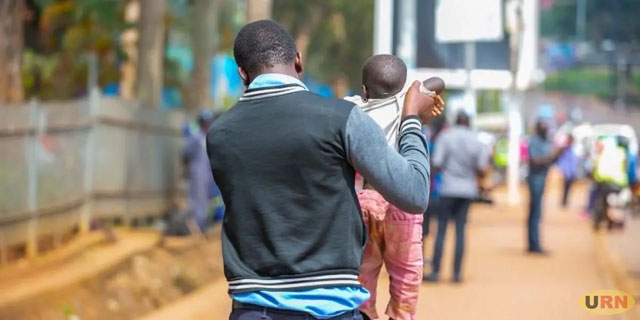
SPECIAL FEATURE | Hafitha Issa & Christopher Kisekka- URN | When walking through the main intersections of Kampala central business district, you will always encounter children in tattered clothes begging for money from pedestrians and motorists. “Mpayo ekikumi”. This is loosely translated as ‘give me Shillings 100’ is a common phrase mixed with some sympathetic expressions the street children use to beg for money.
Some of the children dust car windows with towels and in turn demand Shillings 500 for the service. Some of the children quite often exhibit impolite behavior towards those who decline to give them money. For years now, there have been several efforts to rescue these children from the streets, rehabilitate, and resettle them. The majority of these children hail from Karamoja region and Napak district in particular.
Initially, it was the police that moved in to rescue the children under an operation dubbed “Back Home Campaign for Karamoja Children”. Kampala Capital City Authority-KCCA, the ministry of gender and development partners took over when the police halted its operations. KCCA has been rounding the children and taking them to rehabilitation centers, such as the Koblin Youth Rehabilitation Center in Napak district and UWESO Masulita Children’s Village in Wakiso District.
However, many of the children reappear on the streets a few days after their removal, which leads to questions regarding the effectiveness of these measures. Timothy Opobo, the Executive Director Africhild Centre at Makerere University, says that the measures have not been successful in addressing the issue of street children.
He believes that these programs are being conducted without a thorough understanding of the root causes that force children onto the streets.
Opobo says that it is not a coincidence that the majority of the children seen on the streets come from the same region of the country, which is located far away from the city. To him, this is a clear signal that there must be underlying factors that contribute to this problem, which need to be addressed in order to effectively tackle the issue of street children.
He emphasizes that the factors contributing to the issue of street children should not be assumed but rather studied in-depth before designing any programs to address the problem. Opobo also wonders why KCCA, the Ministry of Gender, and their partners have been using the same approach, which has proven ineffective.
“It is essential to conduct a critical analysis of the situation and identify the root causes before developing any interventions. This will ensure that the programs implemented are effective and lead to sustainable solutions,” opines Opobo.
Stella Ayo-Odongo, a Child Rights and Protection expert, shares similar sentiments noting that the problem of street children is becoming chronic simply because those involved are not dealing with factors that are pushing the children to the streets.
To her, there are factors originating from homes and communities where these children come from, including abuse, insecurity, and violence among others, which need to be addressed to ensure that no new children are pushed onto the street.
She, however, notes that over time, the push factors have become less important as pull factors take over given the fact that there are several individuals who are benefiting from the existence of the children on the streets, more so those who are coming to the streets to beg. These children are trafficked to the streets by their parents and other individuals who place them in traffic-rich areas to beg for money, which they remit to them.
Ayo-Odongo adds that whenever KCCA and its partners drive the children off the streets, those who benefit from their existence in the same area devise means to return them to the city as soon as possible. Just like Odongo notes, there have been public concerns that there is a cartel of sorts involving among others the relatives of the children who view this as a business where children beg and they take whatever they collect from them.
But, a junior officer in the Ministry who requested to remain anonymous blames the endless street children problem on Non-Government Organizations– NGOs, whom he says appear to be helping but are becoming the stumbling block to the efforts by the government.
“The operations of the children are driven by NGOs, they must be seen working and therefore they always write programs and involve the ministry. The cycle continues. I have a feeling that an NGO might as well be behind this. Think of it. if all children are off the streets, what will they be doing,” says the source.
When URN attempted to ascertain the amount of funding that KCCA and the Ministry allocate for operations targeting these children, officials from the agencies indicated that they do not have a specific budget dedicated to such efforts. However, the officials noted that some of the funding for these operations is contributed by non-governmental organizations (NGOs), and occasionally the gender unit.
For instance, according to a statement on KCCA’s website by John Bosco Bashinyora, the Head of the Gender Directorate, says that their operation in late January that saw over 100 children rescued was supported by three local NGOs functioning under the Local Coalition Accelerator initiative.
“The support included fuel equivalent to 720 liters for the bus, coaster, and pickup; meals for the children while in transit and facilitation for the rescue team,” the statement reads in part. But the Ministry staff adds that there is a possibility that the NGOs involved in helping KCCA are also using an underhand to facilitate the return of children to the streets shortly after driving them back to their home districts.
Ayo-Odongo buys into this argument despite the fact that she doesn’t directly point to NGOs. She says that there might be a section of people including those in enforcement agencies who might be behind the return of children to the streets. She says that there is an urgent need to investigate the matter through the police to burst the cartel and name the people behind it.
People in Kampala have pointed out that every morning the children are brought by some older people who station them at junctions to work and every coin they receive goes to them. Isaac Kamya, a driver in Kampala, notes that every morning, these individuals station the children at various junctions and collect the money that they receive from passers-by.
“With cameras installed at the junctions, the police should be able to identify and apprehend those responsible for exploiting these vulnerable children,” he said. He suspects that the police may be involved in this illegal activity leading to the continued exploitation of these children.
Mondo Kyateka, the assistant commissioner department of youth and children affairs at the gender ministry agrees that the previous initiatives have not been well-thought-out and thus end up addressing the symptoms of the problem, rather than dealing with the root cause.
To address this problem, Mondo says there is a need to first understand the root causes and provide sustainable solutions that will enable children to transition from the streets to safe and stable environments.
Nonetheless, he says that they have started to generate policy solutions using research outputs in recent times. For instance, he cites the newly enacted Child Protection Ordinance 2019, which deems it unlawful to give money to these children.
According to the ordinance, any individual found offering money or food to a street child in Kampala is liable to imprisonment for a minimum of six months or a fine of 40,000 Shillings. To Mondo, if effectively enforced, this can be one of the most effective ways to eradicate children from the streets since many come to beg, and if no one gives them money, they will have no incentive to appear on the streets.
He is, however, concerned about the difficulty of enforcing this ordinance. “Now, the practicality of enforcing this is also challenging. So, as we attempt to implement this, we also need to address other aspects of the problem,” he said.
Regarding cracking down on the cartels, including parents, who force these children onto the streets, Mondo notes that there have been some initiatives to apprehend adults found with these children and charge them with child trafficking.
In previous operations, KCCA has also been apprehending adults who accompany children to the streets. For example, in September 2022, City Hall Court sentenced 25 women for trafficking their children to beg on the streets.
From the interviews, there were also recurrent suggestions for KCCA and the ministry of gender to work with local governments where the children originate to ensure that some of the issues pushing them onto the streets are addressed.
*****
URN
 The Independent Uganda: You get the Truth we Pay the Price
The Independent Uganda: You get the Truth we Pay the Price



